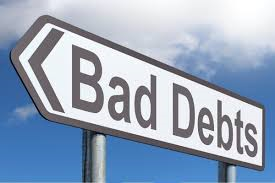Posts Categorized: News
SG deadline warning
SG super deadline warning
Employers have until Tuesday 28th January to meet with SG super obligations.
There is no extension as there is with the Dec qtr BAS.
But beware as some of the clearing houses have a submission and payment deadline well before then. May be even today!
If you haven’t paid your Dec 19 qtr super, do so right now to avoid both the imposition of penalties and the whole amount becoming non-deductible.
If you want to read more about SG super obligations, please go to:-
https://www.ato.gov.au/Business/Reports-and-returns/Due-dates-for-lodging-and-paying/Due-dates-by-topic/Super-guarantee/
Reducing tax on the former home

An often over looked way to reduce the tax paid on the sale of a former home is to use the six year absence rule.
The net rent you receive is assessable (or deductible if negatively geared) but the gain itself can be disregarded.
However, you must take care when choosing to use this method when you live in another home. One is only entitled to one principal residence (family home) exemption so choose carefully
We would welcome the opportunity to discuss what is best for you. We welcome your call.
Non-residents have a house sized problem!

Non-residents have a house sized problem ahead!
The bill to deny non-residents the principal residence (family home) Capital Gains Tax (CGT) exemption that elapsed before the May Federal election has now been reintroduced and passed by Parliament.
What this means that if an Australian working overseas sells their former home, they will pay tax on the entire gain. There will be no reduction for either:-
-
The time they lived in the home nor
-
The 50% CGT general discount (which is not available to non-residents since 2012).
And was non-residents tax on the first dollar at a tax rate of 32.5%, this could equate to a huge tax bill.
Yes, it doesn’t matter how long you lived in the property, a former resident will pay tax on the whole gain. And they will do so at comparatively high tax rates.
So, let’s take an example of Fred, a born and bred Australian who decides to sell their former Melbourne home of say 12 years and decides to buy a home in London where they have been for living for the last three years:-
-
Home bought for $750,000.
-
Home sold for $1,500,000.
-
Gain made of 750,000.
-
No reduction for the 12 years that it was their home.
-
No CGT 50% general discount as they had become a tax non-resident of Australia.
-
No six-year absence rule.
Will result in tax payable of $319,000!
Ouch!!
There are two important carve-outs:-
-
Houses sold before July 2020 which were owned since May 9, 2017. Please note that CGT is based off contract dates, not settlement dates.
-
In the above scenario, there would be no tax payable by Fred if he returned to Melbourne and occupied the property as his home before selling it. This would still appear to be the case after a 20 year stay in London.
Full analysis of this new law is currently light on the ground . We do however invite any query you may have.
Maximise your health insurance entitlements
The end of the year is fast approaching. So amongst your festivity planning, make sure you maximise your health insurance entitlements.
Health funds re-set their limits for extras come January. If you have an unused cap for things such as dental, physios and the like, you may wish to use up your health insurance entitlements before they are lost.
Seeing the physio might be a good move if, like me, you seem to be carrying and lifting a lot of heavy things over the next 30 days!
Don’t forget to register for GST!
Don’t forget to register for GST! If you don’t it could be costly.
The GST registration threshold for businesses that are not non-profits and taxis is $75,000. If your annual turnover exceeds $75,000 and you are not registered, then the ATO will demand you pay them 1/11th of your turnover.
It can prove rather costly!
Where turnover is not seasonal, we recommend that clients register once their turnover exceeds $6,000 per month. And sometimes earlier if they will soon be at the limit and have good accounting processes (which we can help set up).
Not sure what is best for you – call us for a free discussion.
Am I required to register for GST
Am I required to register for GST is a question we often get. The answer is that it depends.
If you operate a business, you are required to have an Australian Business Number (ABN). But this doesn’t mean you have to also register for GST.
Whether you have register depends on your turnover (sales/fees, etc). You must register your for GST if your annual turnover exceeds $75,000 ($150,000 for non-profit organisations; taxi drivers are required to register for GST irrespective of their turnover).
Sounds clear cut – not really!
Annual turnover is defined as being for the current month and the next 11. That’s right, you are expected to be a clairvoyant! That said, one should register once their monthly turnover starts exceeding $6,000 per month – with separate consideration for seasonal business.
Should I register if my turnover is under $75,000?
Well that depends on a number of considerations such as:-
-
Do I want to look bigger to my customers?
-
Are my customers the public or businesses? If they are the public, then your price goes up by 10% (but you get to claim back any GST paid). If they are the business, then they can claim back any GST claimed.
-
If you supply a GST free service such as food and medical supplies, then you won’t charge GST but you will get o claim back GST.
-
Am I going to be able to efficiently run a proper accounting file in order to track and report GST?
So what is best for you? We would be happy to discuss your situation – please call us.
A short case study in improving cash flow #1

Every business owner is rightly concerned about cash flow.
It is not uncommon to see profitable business fail due to poor cash flow.
Yet it never cease to amaze me how little tweaks in a business can deliver dramatic results.
Take the case with one client last week. In our annual general meeting, our analysis software uncovered, amongst many other things, that the business’s cash flow would improve by $8,753 for every day they got they reduced their debtors’ turnover. In their case, this meant having all debtors pay on average with 33 days from the date of being invoiced, not 34. Not much of a change for a big result.
Imagine if they found ways to have their debtors pay on average 10 days earlier. That would mean that they would have an extra $87,530 in the bank at any one time!
For some this could have flow on effects by paying less or now overdraft interest.
We have dozens upon dozens of ideas and ways in which to improve debtor receipts gained from our many years of experience of dealing with many clients in a variety of industries.
We would welcome the opportunity to explore the way in which we can help you. And as our first meeting is free, you nothing to lose – and potentially a lot to gain.
How can I claim car travel?
In order to claim car travel in your personal Tax Return:-
-
You must own the car.
-
You must have undertaken a trip for either your business or your employer.
You can claim under two methods:-
-
Log book, or
-
Cents per kilometre
Tip
You can use a log book kept for three months in the current year or in the last four years (provided the pattern of travel hasn’t changed significantly).
Tip
You must have a properly kept log book. You can do so by buying one in a stationers or you can access an electronic one form our firms app.
Tip
You can claim 68 cents per kilometre under the cents per kilometre method for up to 5,000 work/business strips. This means you can still claim 5,000 km where you travel say 5,500km. Some people choose to do so as it gives them a better claim than under a log book. All you need is a reliable estimate of all trips undertaken during the year.
Want to know what works best for you – call us. We even have a salary sacrifice calculator so we work out the best way to package up a work car and minimise the Fringe Benefits Tax.
SMSF investment strategies
Last month, the ATO wrote to 17,700 self managed super funds (SMSFs) trustees and threatened fines of up to $4,200. The letters were sent to trustees where their SMSF had more than 90% of its assets in one asset class.
It has now come to light that the vast majority of those letters went to those funds where property was the main asset and there was a limited recourse borrowing arrangement (permissible borrowing with super).
The point remains though there is nothing wrong with borrowing nor buying a property within a SMSF. Both are permissible (as long as all relevant requirements are satisfied).
This includes documenting your decisions to do so within an Investment Strategy.
The only thing that appears to have changed is that the ATO has now re-defined a 23 year old requirement and are now expecting trustees to document the decision why you have decided to do so.
Accountants can’t advise on where you should invest your super (they can only provide a template for you to fill in and complete). If you need assistance with the process and/or want to know the long term ramifications of your strategy (and options) then you should speak to a financial planner.
When can I claim a bad debt as a tax deduction?

When can I claim a bad debt as a tax deduction?
You have to satisfy a few conditions:-
-
There must have been an enforceable sale.
-
All reasonable attempts have been made to collect it.
-
The decision to write off it off is evidenced in writing.
-
The customer hasn’t already gone into liquidation or you haven’ t accepted a deal to be paid only x cents in the dollar.
That all said, if you declare income on a cash basis then there is no deduction to be claimed for a bad debt as there wasn’t any taxable income in the first place.
So how do you avoid the cost of a bad debt? Look out for future blogs including what the real costs of a bad debt can be.
Or better yet, ask us.
We have dozens and dozens of ideas and strategies from dealing with hundreds of clients from many different industries.
